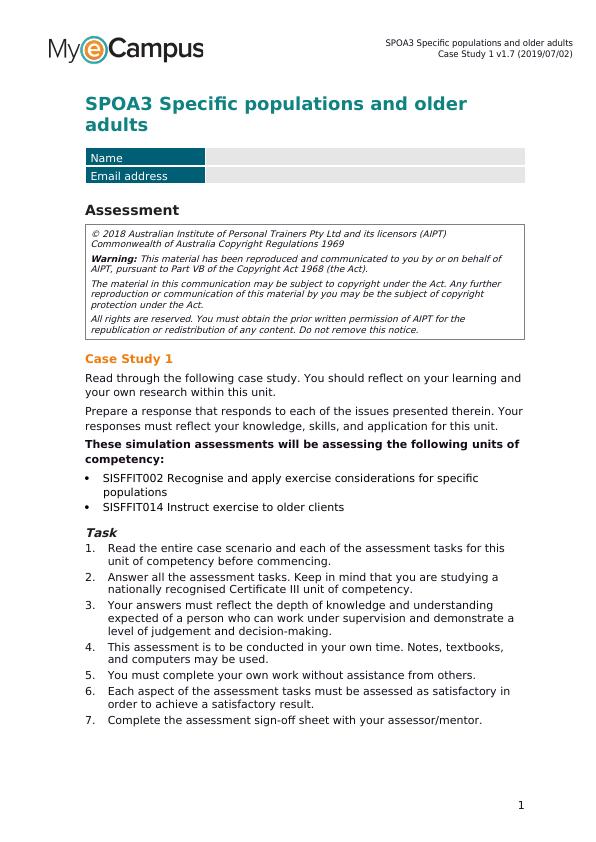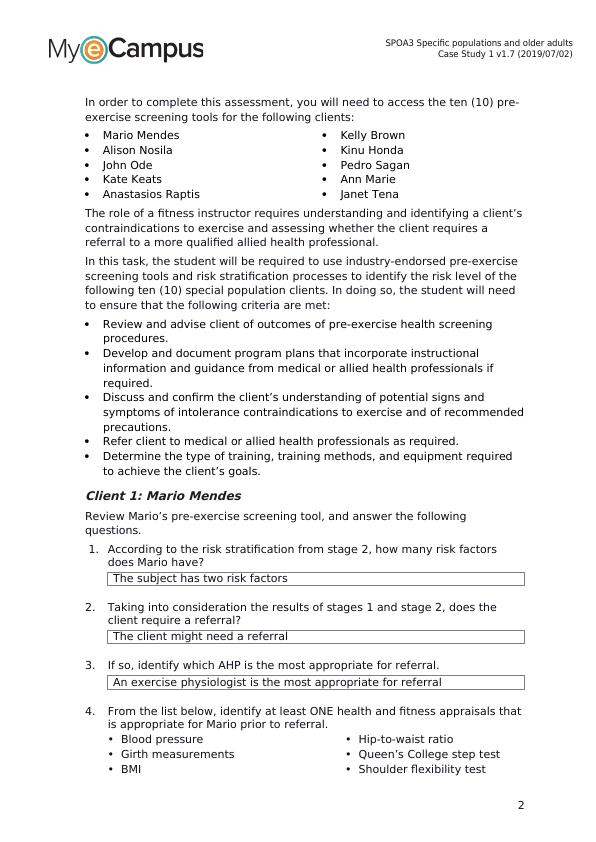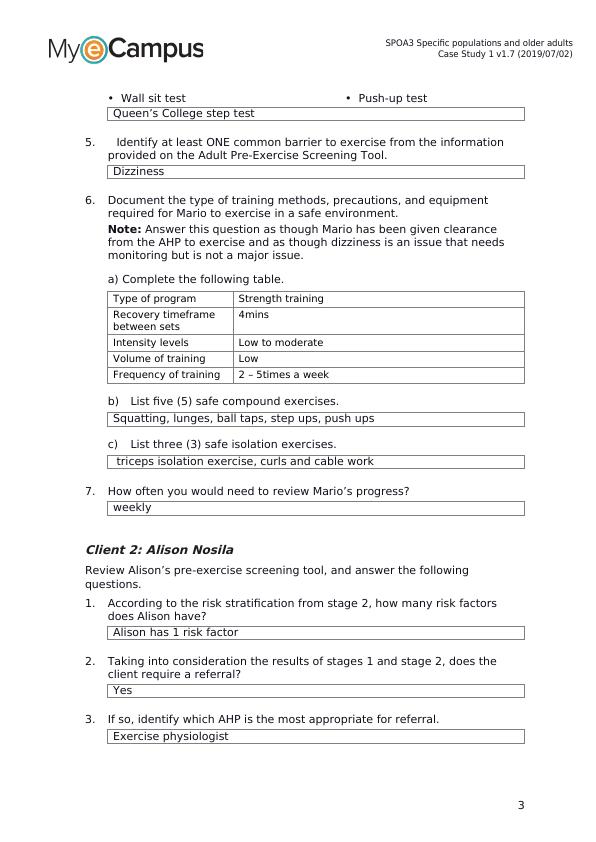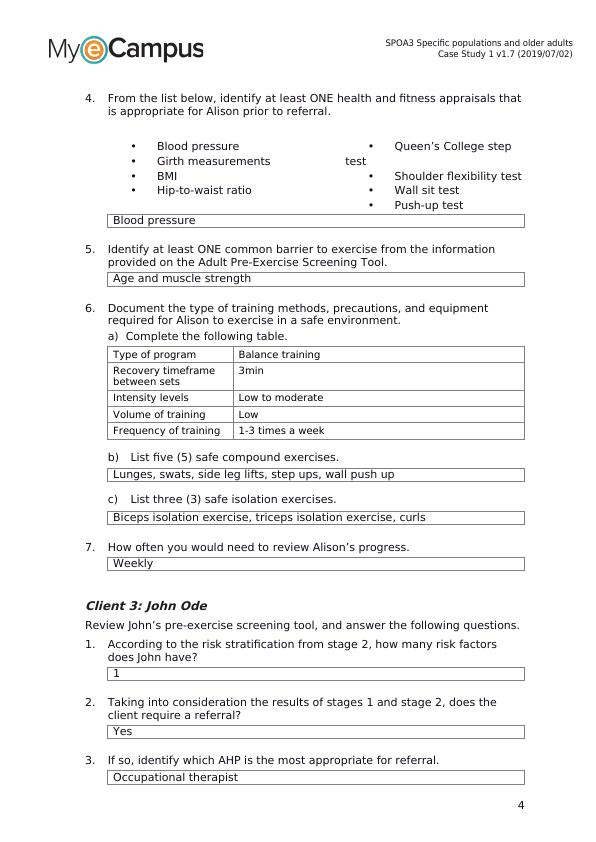SPOA3 Specific Populations and Older Adults Case Study 1
This is a screening tool to identify individuals at higher risk of adverse events during physical activity/exercise.
12 Pages3481 Words355 Views
Added on 2022-11-25
About This Document
This document is a case study for the SPOA3 course on specific populations and older adults. It provides instructions for reviewing pre-exercise screening tools for different clients and identifying risk factors and appropriate referrals. It also includes information on common barriers to exercise and the type of training methods, precautions, and equipment required for each client.
SPOA3 Specific Populations and Older Adults Case Study 1
This is a screening tool to identify individuals at higher risk of adverse events during physical activity/exercise.
Added on 2022-11-25
ShareRelated Documents
End of preview
Want to access all the pages? Upload your documents or become a member.
Specific Populations And Older Adults docx.
|12
|3513
|85
SPOA3 Specific Populations and Older Adults - Case Study 1
|32
|7204
|367
SPOA3 Specific Populations and Older Adults Case Study 2
|21
|2967
|442
SPOA3 Specific populations and older adults docx.
|20
|2841
|35
CS2 Client Screening Case Study
|18
|4244
|22
Assessment 3.2.
|24
|6720
|5




